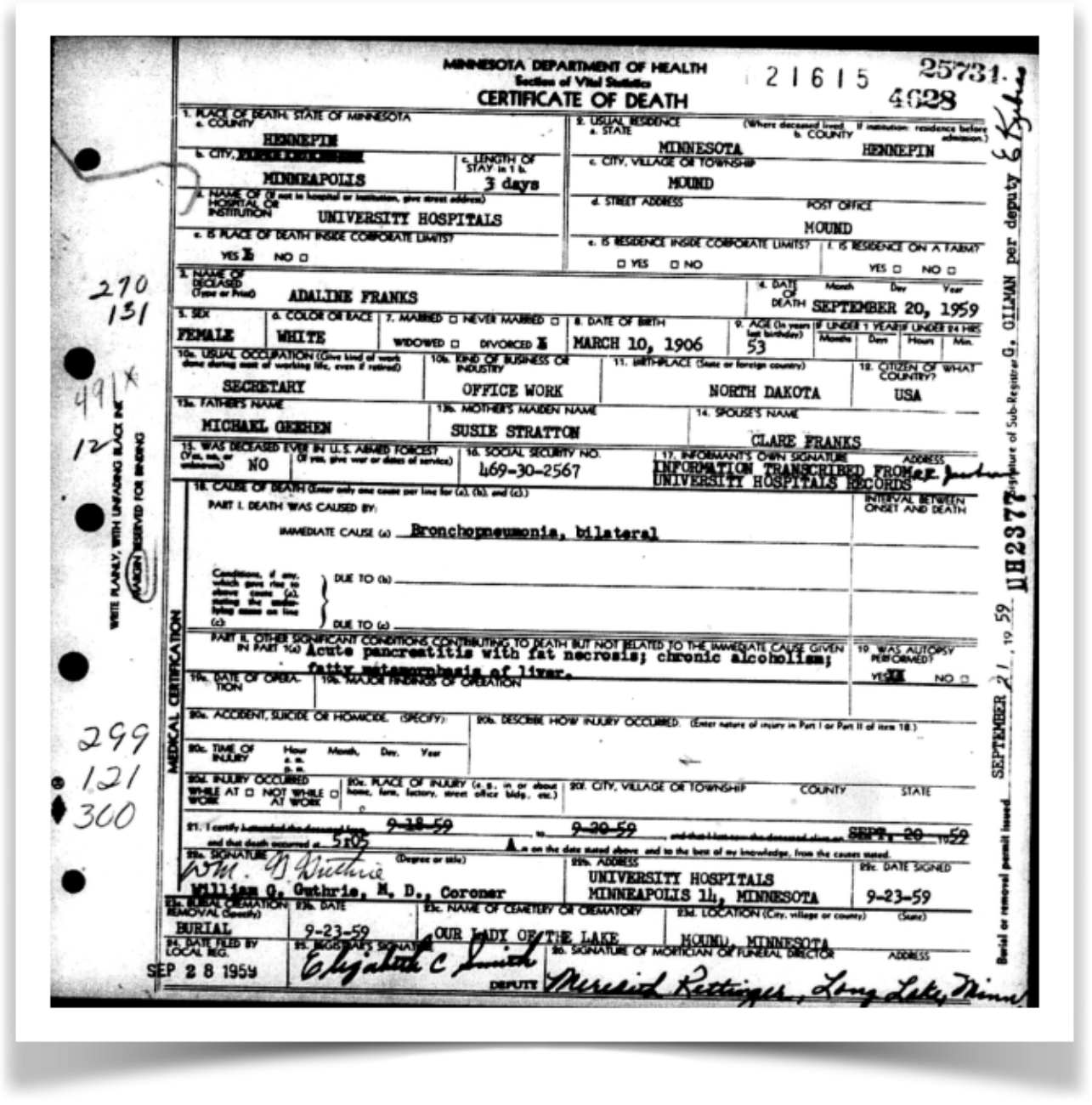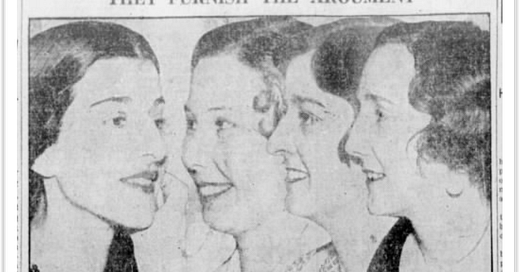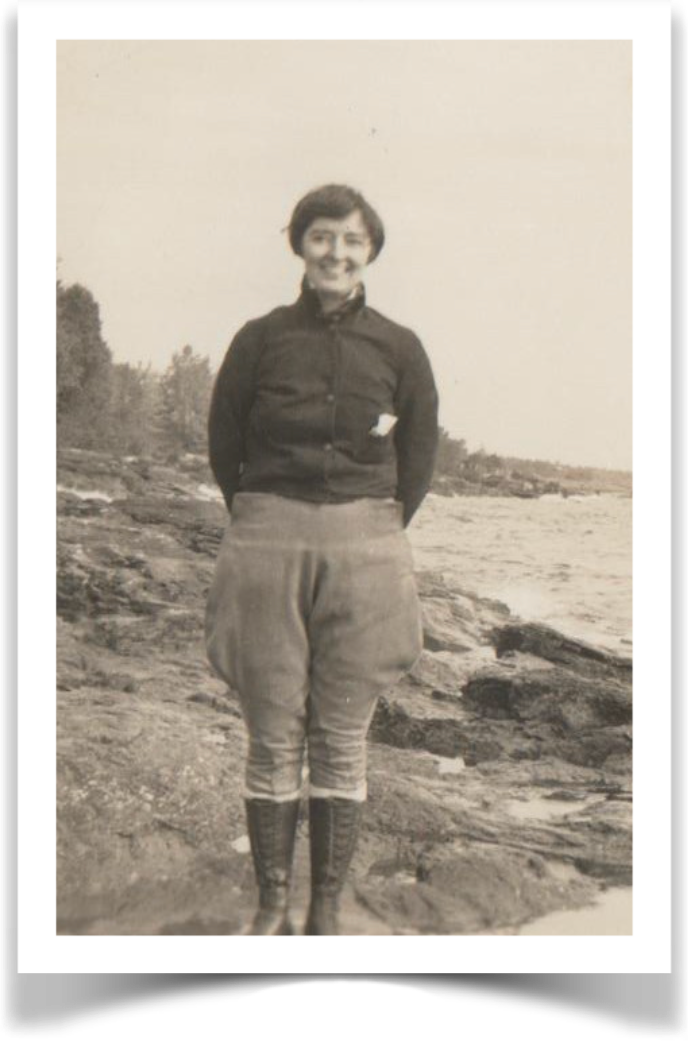In part 1, Adaline’s family finally settles in Graceville, Minnesota and her father finally finds an occupation that sticks. She graduates University of Minnesota and as a young adult is fiercely independent, as was demonstrated by taking her name back after her husband of two years divorces her for his pregnant mistress.
Between 1930 and the middle of 1933, Adaline was busy growing her career in the Mayor's office and taking care of her father. After her mother died in 1926, Michael’s health—both physical and mental—waned quickly and Adaline kept him at her residence in the city during the winter then brought him back to be with his friends in the spring and summer in Graceville. Michael died 3 June 1933. By all accounts, she was a devoted daughter.
Adaline was elected as one of a few women delegates to the state Democratic convention in 1932. She seemed passionate about not only the work she was doing but for the rights of working women, even after marriage, as noted in February of 1933, when was quoted in an article:
"As a matter of principle, I believe that women, married or unmarried, have the same right to work as a man. If we are to argue that a woman should not work because she is married and her husband can support her, then it would be just as logical to extend that theory to all the single people, men or women, whose parents are financially able to support them."
Adaline was involved in organizing women in labor. In fact, she started the first "office workers union" in Minneapolis. Indeed, she was the president of the union sometime in the 1930s prior to 1937. Part of her role was to organize events, some of which included speakers on the topic of "Need for Organization Among Women Workers." Over the years, Adaline worked with both DFLers and Republicans at the mayor’s office. As evidenced by a few newspaper mentions, her role at the mayor's office was important. In 1932, her brother Robert was a witness to “excessive use of force” by police and was called to testify as such. In the news article covering the story, it is noted that Robert is the brother of “Adeline Geehan, stenographer in the mayor’s office.” This connection was obviously important to note. Although there is no specific coverage of Adaline as it relates to the famous 1934 teamster strike in Minneapolis, there is a mention of Adaline possibly switching positions in July of that year. The violence during this time didn’t dissuade her from continuing her efforts, even with the murder of the Teamster Union’s leader, who happened to be Adaline’s first cousin. Needless to say, “Important, passionate and committed” are a few words that describe her during the height of her career.

In 1944 she married Clare L. Franks who shared her passion for politics. He was a former newspaper man who had moved to Minneapolis in 1925 with his wife and children. As a newspaper man with "politics" as his beat, he spent a lot of time at the mayor's office and this is where they likely originally met. Adaline's role as private secretary to the mayor was high profile and made her a gatekeeper to critical personnel and a primary contact for reporters such as Clare. By the time they may have started dating, presumably in the early 1940s, Clare had worked as secretary to Representative Dewey Johnson of the DFL and was the Assistant Manager of Minneapolis Taxpayers Association.
Exactly when Adaline and Clare started dating and whether or not she knew he was married with children is unclear. Clare's family recall that Adaline and Clare were involved for quite a while before they married and while he was still married to their mother. It's hard to imagine that Adaline would have knowingly become involved with a married man, given what she endured with her first marriage, not to mention her strict Catholic upbringing. Even Clare's family speculates that Clare did not divulge his marital status to Adaline in the beginning. Eventually, though, Clare divorced his wife for the purpose of marrying Adaline - perhaps an ultimatum that Adaline delivered.
There is some evidence that suggests Adaline struggled with being involved with Clare. Upon learning of the affair Clare was having with Adaline, his teenaged children responded with anger and name-calling, much of it directed at Adaline ("home-wrecker", "punchboard" and probably worse).
She corresponded with her Aunt Bridget and cousins in Yakima about it and also took a trip to spend a week with her cousins, presumably to gain some perspective on the situation. Nevertheless, they did marry in 1944 after having been living together since at least 1942 in Island Park (near/on Lake Minnetonka.) Clare was fourteen years older and while Adaline was at the height of her career, he was ready for a quieter life.
By the 1950's, Adaline was working at The Parker's Lake Workhouse, located in Plymouth. In her role she managed the annual budget, at times reporting about it to the City Council. Based on her earlier activism that helped change the face of organized office workers (most of whom were women) forever, managing a budget at the workhouse may have felt inconsequential. A deep depression may have set in, exasperated by any potential guilt and conflicting emotions associated with her relationship to Clare and the isolation of Island Park (vs. the busy and important life she had in the city). This may be why and when she started to drink excessively. In fact, sometime in the early 1950’s, Adaline’s sister-in-law recognized that there was a drinking problem.
Up until this point, Adaline had been in regular contact with her Yakima family through letters, and when they did not hear from her for quite a while, they feared (and it would not have been unfounded to do so) that her work organizing unions had caught up with her and she had been murdered for her efforts, like her cousin Patrick Corcoran. The truth is arguably much more tragic. Although not yet specifically confirmed, there is some evidence that suggests sometime in the late 1950's, she and Clare divorced. This would mean that she died alone at 5:05 a.m. on 20 September 1959 after three days in the University hospital. Her death was the result of Bronchopneumonia with a significant contributing factor of "chronic alcoholism".

According to her death certificate, she is buried at Our Lady of the Lakes Cemetery in Mound, Minnesota. There was never a second plot purchased for Clare. There are no known obituaries for Adaline and there was no mention of her in any of Clare's lengthy obituaries when he died in 1966. However, a few months after she died, she was memorialized as an “unsung heroine” in a little blurb that mentions her role as the VP of the Minneapolis branch of the NAACP and recounts her generosity of time and finances from her “modest income” to help get the message out.
The daughter of a failed farmer who at the height of her career had a high-profile and high-paying job at the City of Minneapolis’ Mayor’s office, Adaline was a smart, beautiful woman committed to supporting and improving the rights of women and other marginalized communities. Though she never seemed to have found a lasting love, it is clear that she was adored by her family and admired by her colleagues.
~~~
The most difficult part of researching and writing Adaline’s story was the fact that even with the little information I had, I admired her very much, which can lead to confirmation bias. I talk about how I overcame that in my podcast episode “Avoiding Bias in Family History Narratives.”







How cool that you uncovered this information about your ancestor.
Beautiful tribute to an incredible woman! I really enjoyed learning about her.